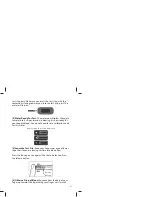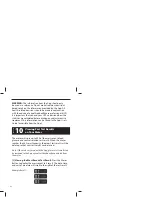
31
[4]
Results below 70 mg/dL may mean low blood glucose
levels (hypoglycemia).
[5]
Results over 240 mg/dL may mean high blood glucose
levels (hyperglycemia). Checking ketones may be advisable.
[6]
If you get results below 70 mg/dL or above 240 mg/dL
and do not have symptoms of hypoglycemia or hypergly-
cemia, repeat the test. If you have symptoms, or continue
to get results that fall below 70 mg/dL or rise above 240
mg/dL, follow the treatment plan recommended by your
healthcare provider or contact your healthcare professional
immediately.
[7]
If you are experiencing symptoms that are not consistent
with your blood glucose test and you have followed all
instructions described in this Guide, follow your healthcare
professional’s recommendations.
[8]
If you get repeated error messages and are experiencing
symptoms of hypo or hyperglycemia, contact your healthcare
professional immediately as this may indicate low or high
glucose. If this error code persists on retesting, consult your
healthcare professional (see Chapter 13: Error Messages).
[9]
Do not use test strips that are expired or appear to be
damaged as they may return inaccurate results.
[10]
Always follow your healthcare professional’s
recommendations.
[11]
Treatment goals are individualized for each patient.
Speak with your healthcare professional about the target
blood glucose ranges that are right for you.






































